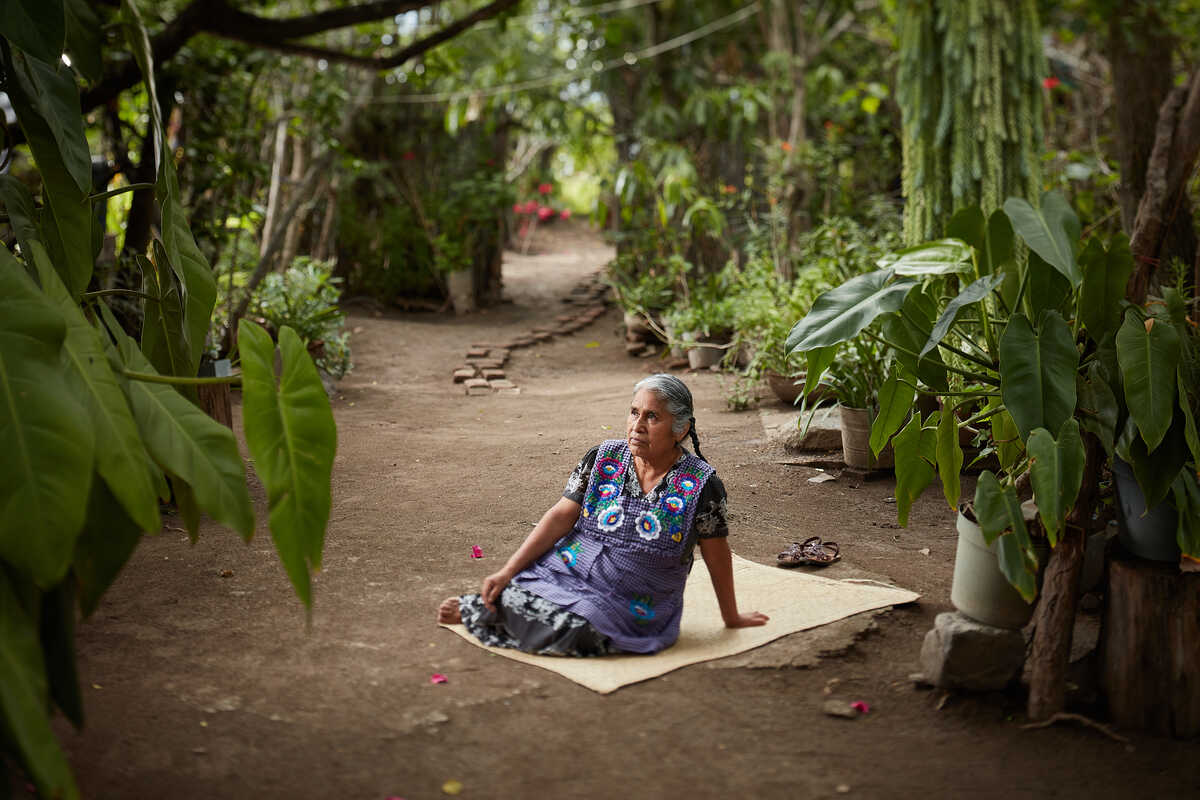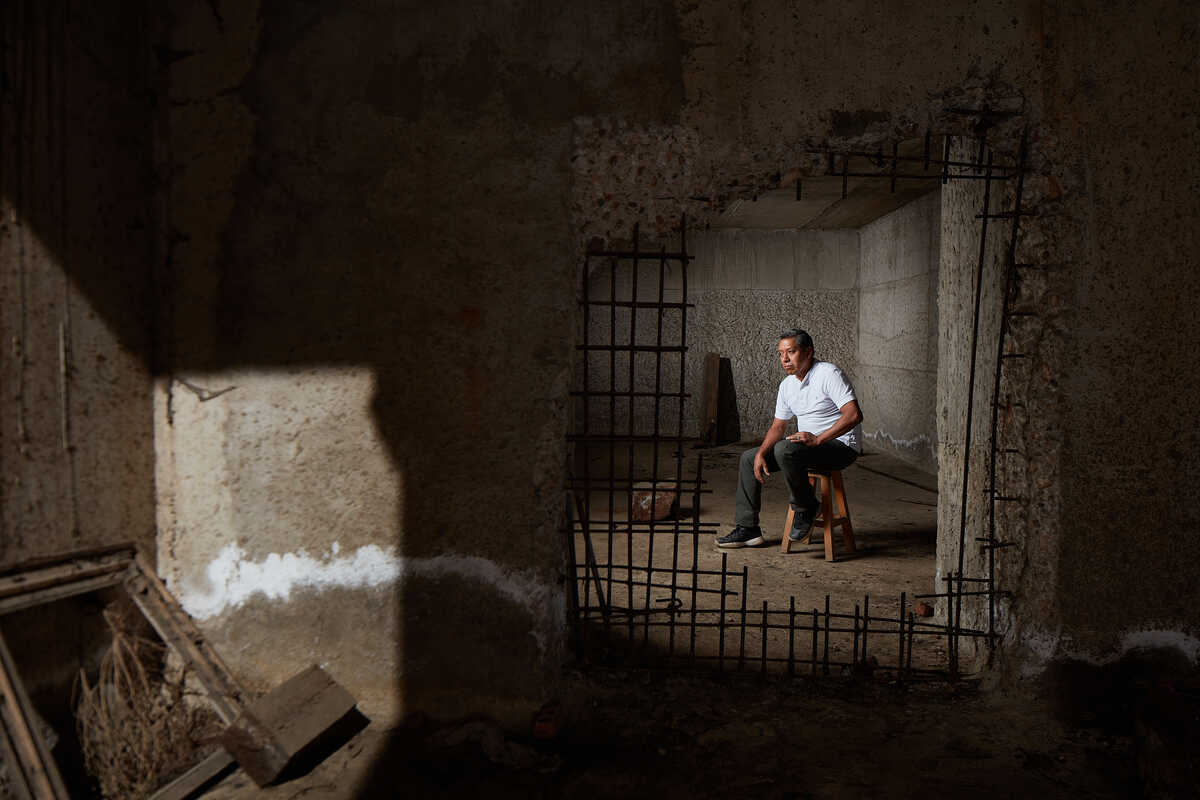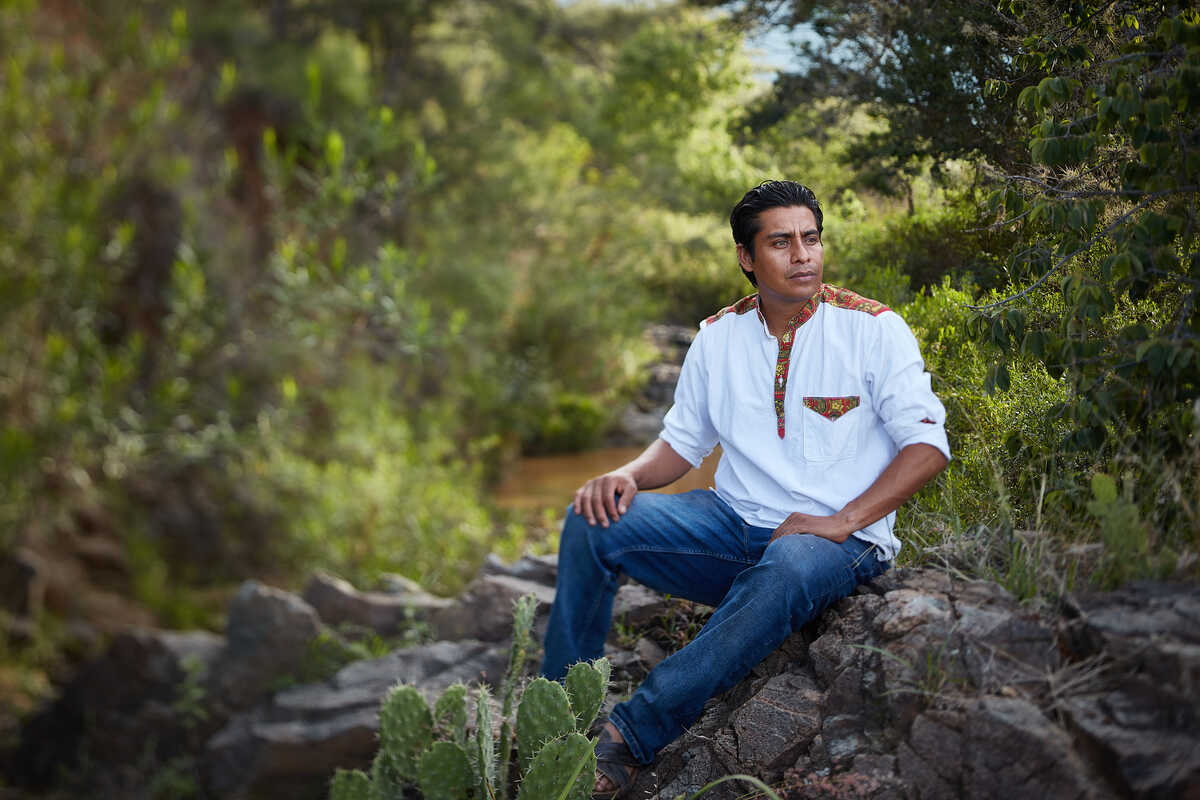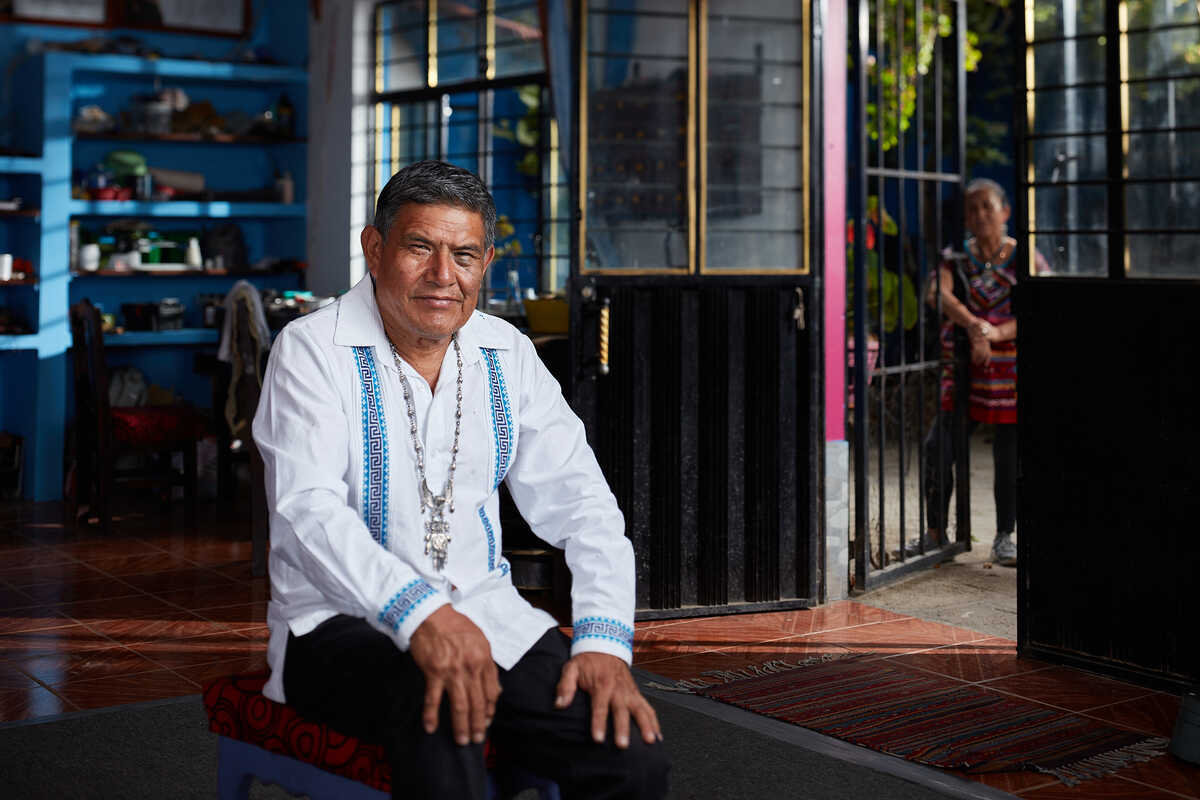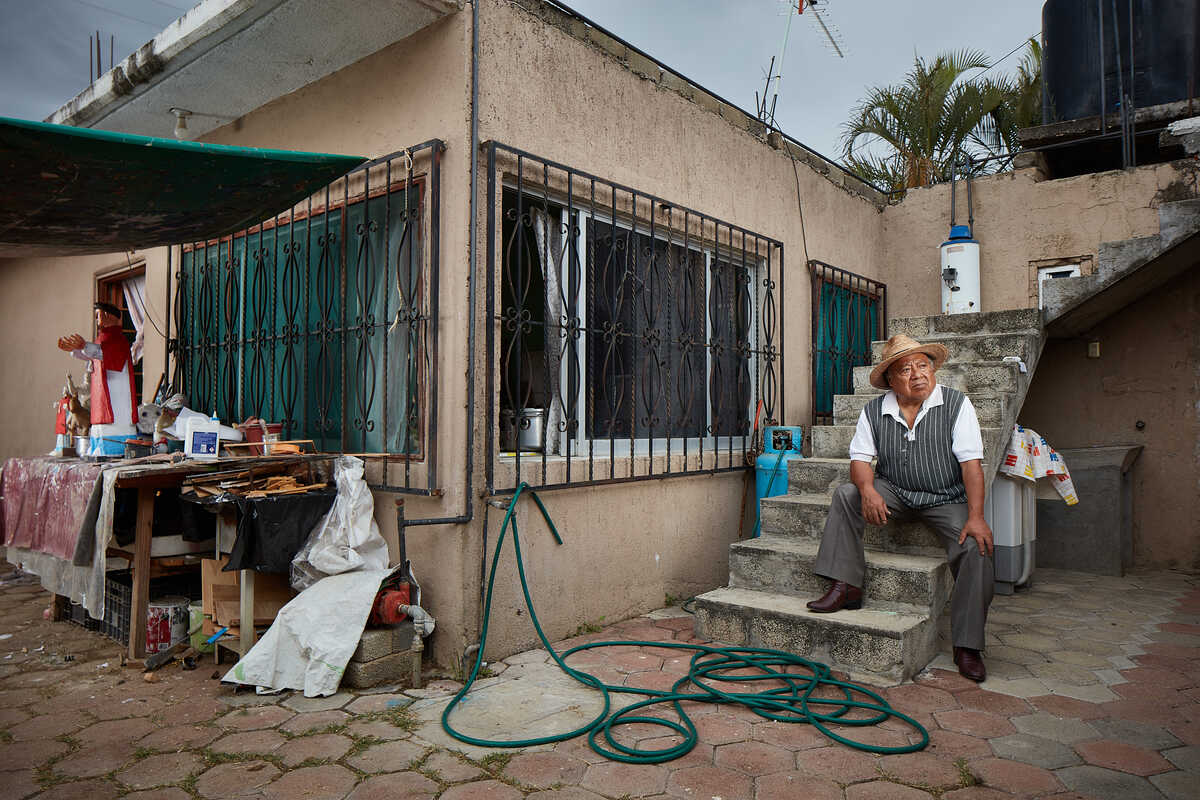Artists
Crispina Navarro GómezPermalink
Familia Navarro Gómez.
Santo Tomas Jalieza, Ocotlán, Oaxaca.
Crispina, Margarita and Inés, together with their mother Mariana maintain the tradition of weaving via the backstrap loom, a tool that dates from the Mesoamerican period. The family’s workshop is located in the Zapotec community of Santo Tomas Jalieza, renowned for preserving pre-Hispanic patterns and techniques.
When Mariana Goméz arrived in Jalieza, she learned the traditional weaving style and patterns from her husband’s family, then proceeded to pass it on to the three daughters who continue to weave with her, beginning when they were each around seven years of age.
Ample written documentation was left by certain civilizations of Mesoamerica, such as by the Mixtec, Maya or Aztec cultures. This includes codices written on parchment and carved in stone steles, as well as paintings on walls and in tombs. However, in the case of the Zapotec culture, its history and belief system cannot be as readily found in such forms; according to anthropologists, it has been best preserved and documented via craft traditions, such as in the patterns used in the weaving of the Navarro Goméz family, which appear to rank among the most intact and iconic visual representations of that culture.
Tirso CuevasPermalink
Oaxaca de Juárez, Oaxaca.
Metallurgy is, without a doubt, one of the technologies most representative of the arrival of the Old World in Mesoamerica. It had an enormous influence in the production of utilitarian objects but also in Christian sacred art. The arrival of the Catholic church and its efforts to colonize indigenous villages also ushered in the ascendance and eventual acceptance of metallurgy and hammered tin work in those communities. Hammered tin, in the way that it has entered, been accepted as part of local tradition, and changed form in its New World context, is a clear mixture of both European and Mesoamerican cultures.
Tirso Cuevas learned to work in hammered tin at a young age thanks to coming into contact with a number of renowned Oaxacan artists who have also preserved and elevated the form. Apart from the quality and innovation imbues his work, Cuevas is known for working without patterns and for preserving certain colonial techniques, including welding the tin using an externally fired soldering iron.
Iván Cruz LópezPermalink
Zaachila, Oaxaca.
As a dancer and dance instructor in the Dance of the Feathers, an iconic theatrical dance from Oaxaca, Iván Cruz López has represented his community in Mexico and other parts of the world. Upon discovering that the practice of making the feathered crowns worn by the dancers had been lost in his community, he began a project to rescue the emblematic cultural tradition.
In ancient Mexico, feathered artwork held great value. Feathers were part of the costumes worn by the nobility, rulers, and priests. Anthropologists have observed that feathers were valued more highly than gold or silver at the time, making work with the material among the most valued and prestigious in Mesoamerica.
Arturo SalgadoPermalink
Xoxocotlan, Oaxaca.
Arturo Salgado learned silversmithing thanks to his brother leading him down that path. Together they produced jewelry for local shops, which bought their work at wholesale. Upon the death of his brother, Salgado decided to break away from those business and form his own workshop. Although the production of jewelry was considered an activity exclusively masculine at the time, he eventually taught the craft to his wife and three daughters, breaking with that model. The work of the family stands out for featuring designs that are unique, contemporary and reflective of the relative diversity of the practitioners.
The native people of Mesoamerica worked in metallurgy, mainly casting pieces using molds made from beeswax and clay. In Oaxaca, the Mixtec people were known for their work as goldsmiths, in addition to working in other noble metals. Their techniques were eventually combined with the processes and raw materials that were carried to the continent by the Spanish, creating a fusion in Mexico with a distinct identity.
José Luis García CruzPermalink
San Lorenzo Cacaotepec, Oaxaca.
José Luis García Cruz is a graduate of the prestigious San Carlos art academy in Mexico City. From a young age, he was fascinated by visual arts, later collaborating as an illustrator on large-scale advertising campaigns. He also illustrated many of the most popular comic books in the latter decades of the twentieth century.
Thanks to his education in fine arts, Cruz is a master in working with various techniques and raw materials. One of those is the application of work in oil paint over woven palm mats as seen in Mestizaje.
Isaías Jiménez HernándezPermalink
Arrazola, Xoxocotlan, Oaxaca.
Manuel Jiménez is considered to be the creator of the modern form of painted folk art wood carving now found in many parts of Oaxaca. Isaías Jiménez, one of his sons, was born in the house that where the first wood carvings of that type also emerged. From a young age, he learned the art of creating figures of fantastic creatures and imbuing them with a lifelike affect.
Today, the Jiménez home continues to house the family workshop as well as exhibit historical and contemporary works. Isaías Jiménez’s wife and children play a prominent role in the fabrication and development of innovative new works, experimenting with various forms and painted patterns while also continuing to carve pieces that reflect the style of the works that first emerged from the residence.
Wilmer VásquezPermalink
Teotitlán del Valle, Oaxaca.
Wilmer Vásquez is a member of one of the textile workshops most emblematic of Teotitlán del Valle, known for its contribution to the study and resuscitation of the use of pre-Hispanic dyes. The techniques, based in natural pigments sourced from indigenous raw materials, were developed by the hand of his grandfather, Isaac Vásquez.
As is common in Teotitlán, Wilmer began to learn to weave at a young age and became recognized for his unique designs, perhaps later inspired by his studies of culinary arts.
The wool rugs made in the village on colonial-style pedal looms represent a mixture of global influences. The looms are tools brought by the Spanish to the Americas after learning the technology in India; sheep, the producers of the wool, are imported European livestock, while the dyes employed likely predate European incursion. In pre-Hispanic times, weaving was also practiced in the area but using backstrap looms and a type of native cotton.
